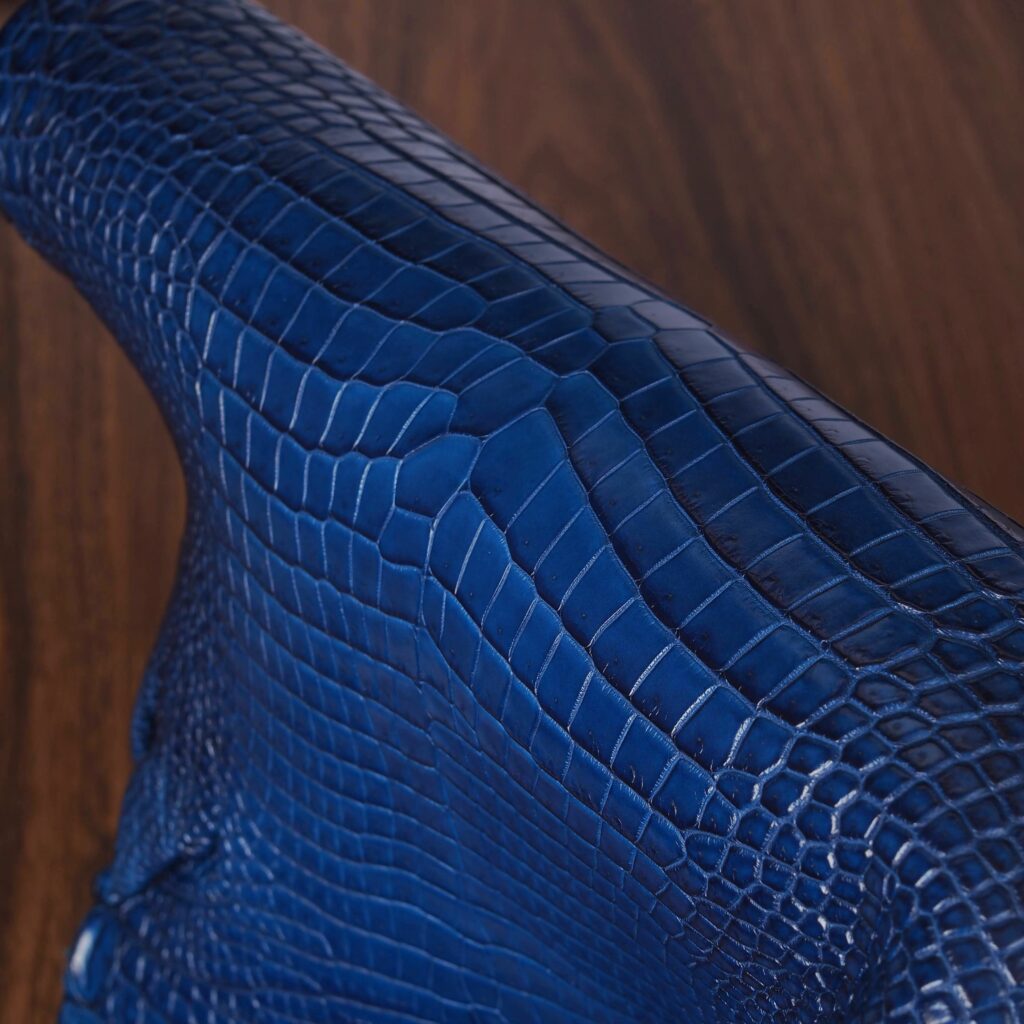Alligator vs Crocodile: Which is Better?
Alligator and crocodile leathers are widely viewed as the most luxurious leathers there are. But which is better?
Obviously, the two are closely related, both belonging to the order, crocodilia.
There are, in fact, more than two dozen species of crocodilians, several of which are farmed commercially.
The majority of skins on the market are American alligators, Nile crocodiles, and saltwater crocodiles.
The luxury factor of the leather ultimately has much more to do with the quality of the skins themselves, as well as the expertise of the tannery. Farmed-raised skins with few defects go for an enormous premium over, wild-caught animals.
The quality between skins are often obvious in both appearance and price.
To belabor the point, these factors are far more important in assessing the quality than the species. That being said, let’s turn our attention to the question posed.
The most exclusive crocodilian leather is, drumroll…
Saltwater crocodile.
This is mainly due to the beautiful scale pattern this species exhibits. While, of course, beauty is in the eye of the beholder, it typically does command a fair premium over its cousins.

The above photo shows saltwater (porosus) crocodile. Notice the very pleasing shape of the scales.
This skin also showcases the Himalayan finish, which is a special finish that doesn’t use dye. The natural markings are preserved and the tanning renders the skin white. The very best skins are selected for this finish as there is simply nowhere for the defects to hide.
Its named Himalayan since the colors and shape are reminiscent of the snow-capped mountains of the Himalayas.
After saltwater crocodiles, alligator is generally considered the next most desirable. It is is easily identified as it lacks the pore on each scale that crocodiles have.

The most common crocodilian leather sold is Nile Crocodile. It is typically sold at a price equal to or slightly less than alligator. Same goes for the other less common species, which include Siamese, Morelet’s, and New Guinea crocodiles. Caiman is also a popular crocodilian leather, but is considerably less desirable due to its boney nature.
Other species, like the Chinese crocodile, are currently endangered and are not farmed commercially.
As a side note, although somewhat counterintuitive, tanneries are often directly involved in species conservation. The availability of farmed skins greatly reduces poaching and has directly contributed to the recovery of some crocodilian species.

So there you have it. Saltwater crocodile is the most desirable of the crocodilians, with alligator, Nile crocodile not far behind. Other species, like Siamese, New Guinea, and Morelet’s are just as nice, too, but are less common. Of course, species plays a much smaller role in overall luxuriousness, than the quality of the skin and tanning.
Some of the most famous reptilian tanneries are Heng Long in Singapore, which was purchased some time ago by the LVMH group, as well as HCP which is owned by Hermès. There are also several Italian and Japanese tanneries that also produce comparable products.
